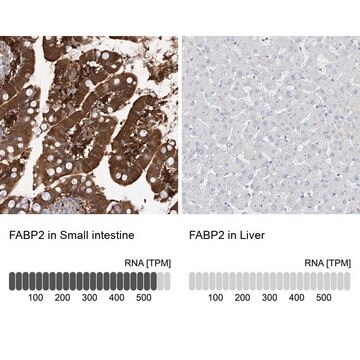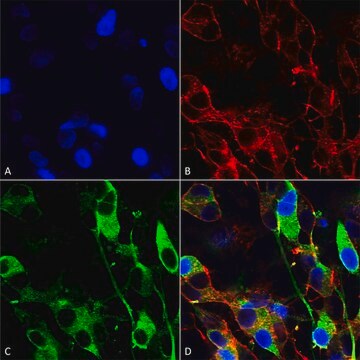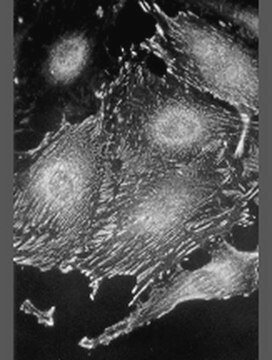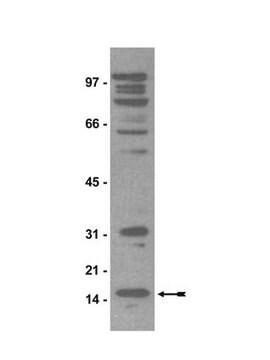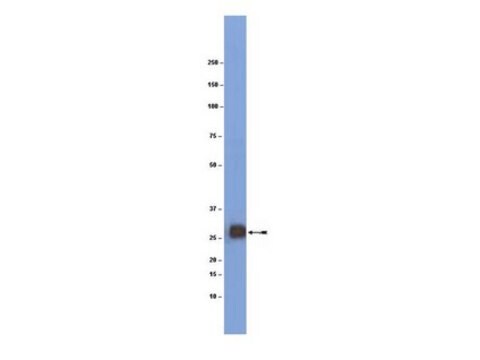MABN698
Anti-FABP2 Antibody, clone 9A9B7B3
ascites fluid, clone 9A9B7B3, from mouse
Synonim(y):
Fatty acid-binding protein, intestinal, Fatty acid-binding protein 2, Intestinal-type fatty acid-binding protein, I-FABP
About This Item
Polecane produkty
pochodzenie biologiczne
mouse
Poziom jakości
forma przeciwciała
ascites fluid
rodzaj przeciwciała
primary antibodies
klon
9A9B7B3, monoclonal
reaktywność gatunkowa
human, mouse
metody
flow cytometry: suitable
immunofluorescence: suitable
immunohistochemistry: suitable
western blot: suitable
izotyp
IgG1
numer dostępu UniProt
Warunki transportu
wet ice
docelowa modyfikacja potranslacyjna
unmodified
informacje o genach
human ... FABP2(2169)
Powiązane kategorie
Opis ogólny
Immunogen
Zastosowanie
Immunohistochemistry Analysis: A 1:200-1,000 dilution from a representative lot detected FABP2 in human small Intestine tissues.
Flow Cytometry Analysis: A 1:200-400 dilution from a representative lot detected FABP2 in LOVO cells.
Optimal working dilutions must be determined by end user.
Neuroscience
Developmental Neuroscience
Jakość
Western Blotting Analysis: A 1:2,000 dilution of this antibody detected FABP2 in human small intestine tissue lysate.
Opis wartości docelowych
Powiązanie
Postać fizyczna
Przechowywanie i stabilność
Handling Recommendations: Upon receipt and prior to removing the cap, centrifuge the vial and gently mix the solution. Aliquot into microcentrifuge tubes and store at -20°C. Avoid repeated freeze/thaw cycles, which may damage IgG and affect product performance.
Komentarz do analizy
Human small intestine tissue lysate
Oświadczenie o zrzeczeniu się odpowiedzialności
Nie możesz znaleźć właściwego produktu?
Wypróbuj nasz Narzędzie selektora produktów.
Kod klasy składowania
12 - Non Combustible Liquids
Klasa zagrożenia wodnego (WGK)
nwg
Temperatura zapłonu (°F)
Not applicable
Temperatura zapłonu (°C)
Not applicable
Certyfikaty analizy (CoA)
Poszukaj Certyfikaty analizy (CoA), wpisując numer partii/serii produktów. Numery serii i partii można znaleźć na etykiecie produktu po słowach „seria” lub „partia”.
Masz już ten produkt?
Dokumenty związane z niedawno zakupionymi produktami zostały zamieszczone w Bibliotece dokumentów.
Nasz zespół naukowców ma doświadczenie we wszystkich obszarach badań, w tym w naukach przyrodniczych, materiałoznawstwie, syntezie chemicznej, chromatografii, analityce i wielu innych dziedzinach.
Skontaktuj się z zespołem ds. pomocy technicznej